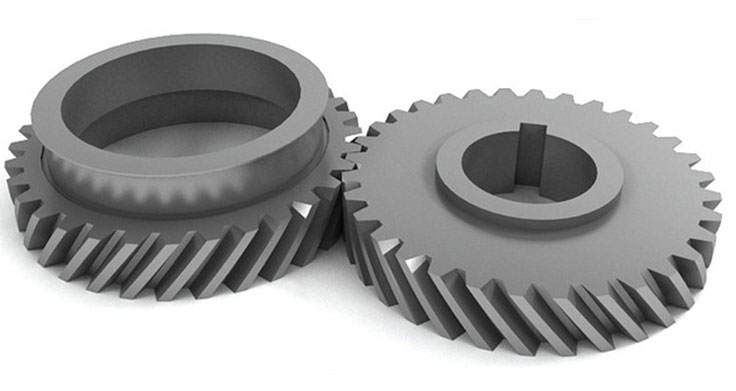Helical gears are known for their efficiency in power transmission, but several factors can influence their performance. Understanding these factors is essential for optimizing helical gear efficiency. Here are the key factors that impact the efficiency of helical gears:

1. Tooth Profile and Design:
- The tooth profile of helical gears plays a crucial role in determining their efficiency. The correct tooth shape and design minimize friction and improve load distribution, leading to higher efficiency. An accurately designed involute tooth profile is essential for achieving optimal gear performance.
2. Helix Angle:
- The helix angle is the angle between the gear teeth and the gear axis. A proper helix angle is critical for smooth and efficient gear meshing. Too steep a helix angle can increase sliding friction, while too shallow an angle can reduce gear load-carrying capacity.
3. Lubrication:
- Adequate lubrication is vital for reducing friction and wear in helical gears. Properly chosen lubricants with the right viscosity and properties form a protective film between the gear teeth, reducing metal-to-metal contact and improving gear efficiency.
4. Tooth Surface Finish:
- The surface finish of the gear teeth influences gear efficiency. A smooth and polished tooth surface reduces friction and wear, enhancing gear performance.
5. Backlash:
- Backlash refers to the play or clearance between gear teeth during meshing. Minimizing backlash is essential for reducing energy losses and improving gear efficiency. Proper gear tooth engagement and precise gear alignment help in achieving lower backlash.
6. Misalignment:
- Misalignment between the gear shafts can lead to increased friction and efficiency losses. Proper alignment of the gear axes ensures smooth meshing and efficient power transmission.
7. Load Distribution:
- Helical gears distribute the transmitted load across multiple teeth due to their helical shape. This load distribution helps in reducing stress concentration and tooth wear, contributing to higher efficiency.
8. Material Selection:
- The choice of materials for the gear and pinion affects gear efficiency. Selecting materials with low friction coefficients and high wear resistance can improve gear performance.
9. Manufacturing Quality:
- Precise manufacturing processes are crucial for achieving high gear efficiency. Proper gear cutting, tooth profile accuracy, and quality control during production ensure optimal gear performance.
10. Operating Conditions:
- The operating conditions, such as speed, torque, and temperature, can impact gear efficiency. Understanding the specific requirements of the application and selecting gears accordingly can optimize efficiency.
It’s essential to consider these factors during the design, manufacturing, and maintenance of helical gears to achieve the highest efficiency possible. Regular gear inspection and maintenance, as well as using high-quality lubricants, are essential for sustaining gear efficiency over time. By focusing on these factors, designers and engineers can ensure that helical gears operate at their best performance and contribute to more efficient mechanical systems.
